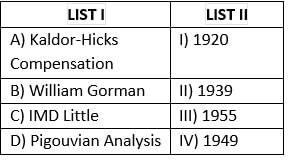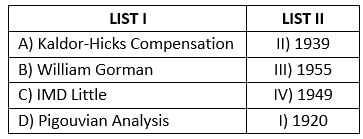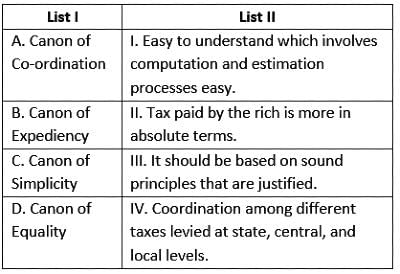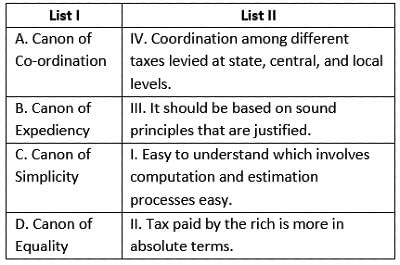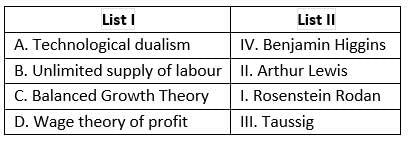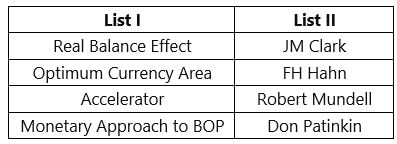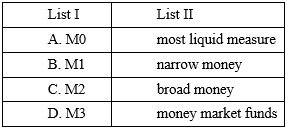CUET PG Economics Mock Test- 9 - CUET PG MCQ
30 Questions MCQ Test - CUET PG Economics Mock Test- 9
In the context of Hicksian trade cycle theory the economy after achieving full employment or peak gets,
In the context of Indian economy the biggest money market scam of 1992 is a prime example of misuse of?
Statement I: Cost elasticity of output less than 1 shows a declining average total cost.
Statement II: Cost elasticity of output could be negative.
Read the following statement and choose the correct answer. Which of the following is correct about Rostow's "Drive to maturity" stage?
A. Investment Rate rises from 20% to 30%.
B. Import-replacement and export industries start setting up and expanding.
C. Population growth rate <growth rate of national income, hence, real per capita income rises.
D. An economy remains in this stage for around 20 to 30 years.
E. This stage marks the spread of technical know-how to other sectors, which leads to specialization and division of labor further. This equips the economy to produce almost anything and everything.
Statement I: The GST model was based on a dual GST model
Statement II: The dual GST model refers to the GST being levied by both Central and State governments.
Statement I: Public goods are non-rivalrous in consumption.
Statement II: It can be difficult or expensive to prevent people from using public goods.
Read the above-mentioned statements and choose the correct option given below
Arrange the following in chronological order starting from the oldest:
A. Theory of unequal exchange
B. Dynamic comparative advantage
C. Leontieff Paradox
D. Rybczynski Theorem





 .
.

